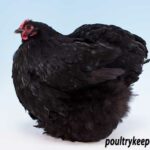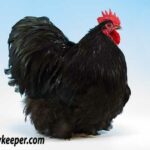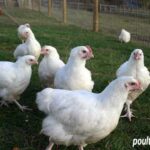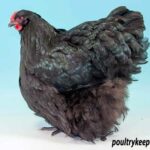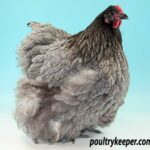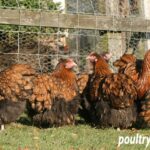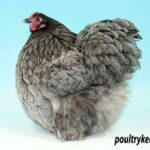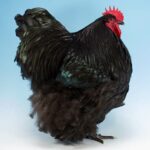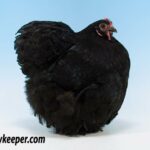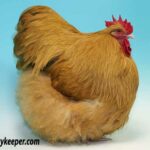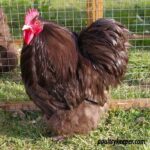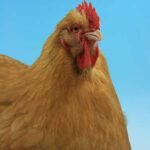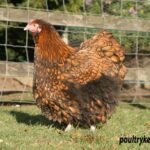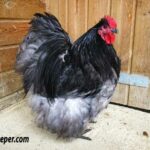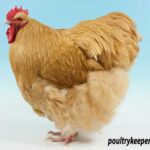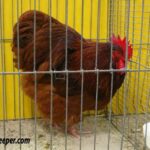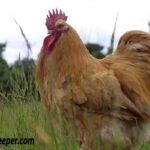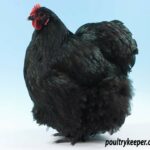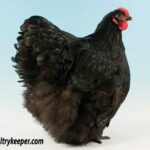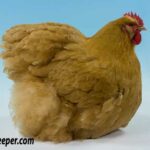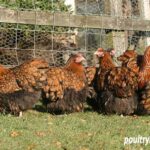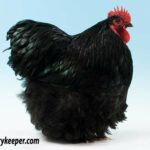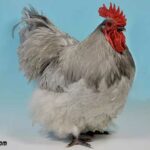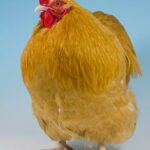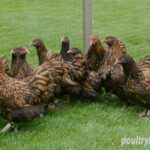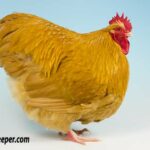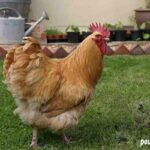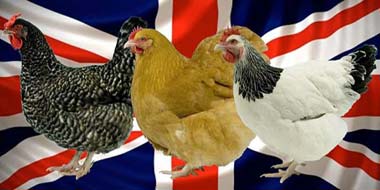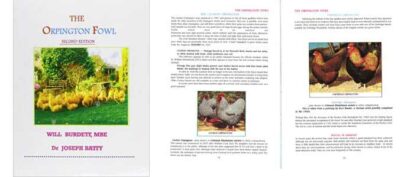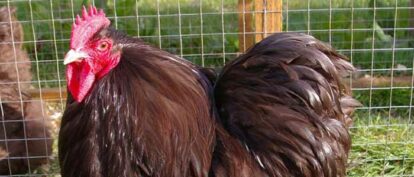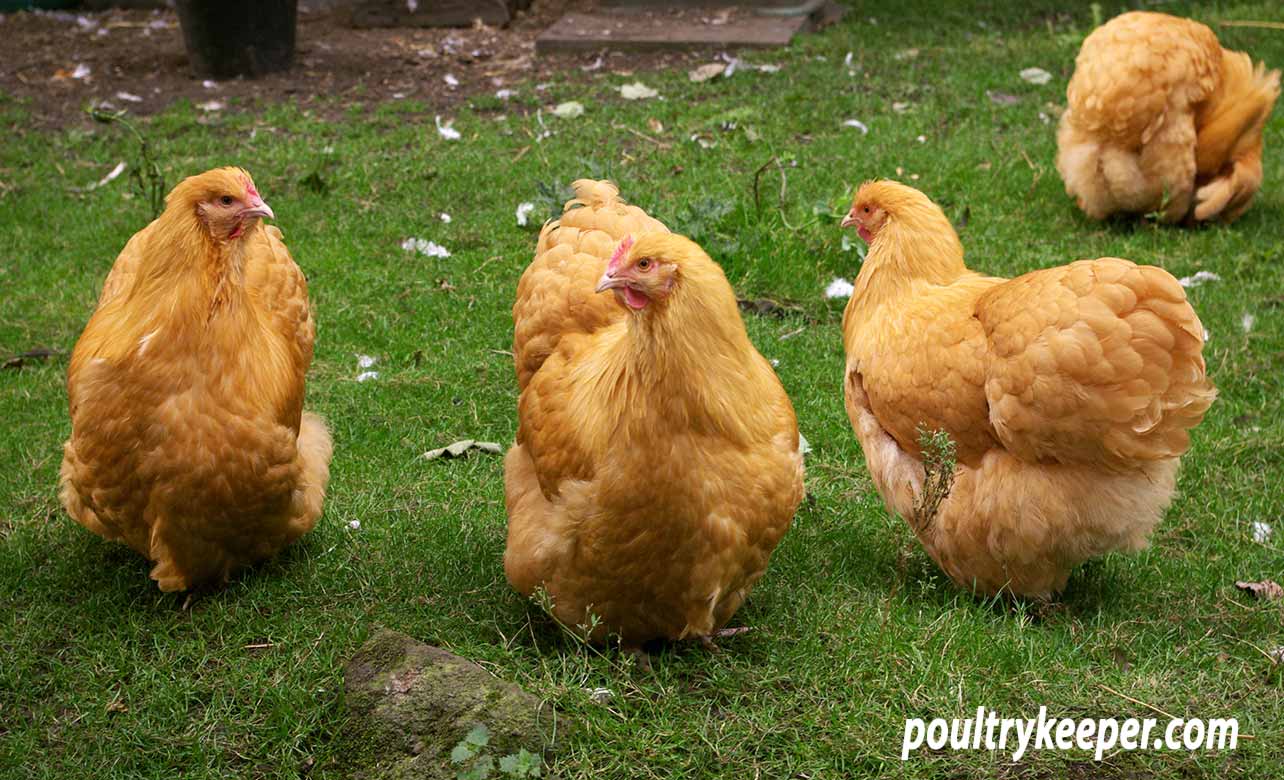
Breed In
Focus
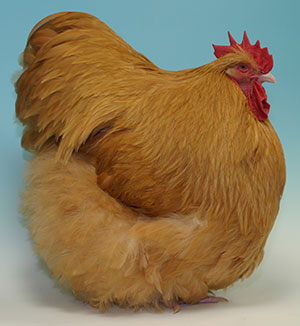
The Orpington fowl is more impressive in the flesh than in photographs that accompany the various books on pure breeds of poultry.
With its abundance of feathers, the large fowl Orpingtons fill their show pens and are a sight to behold. The bantams – a miniature version of this magnificent breed – are still relatively big birds and equally eye-catching and impressive.
Viewed by many poultry writers as a ‘show breed that doesn’t lay very well,’ this label is perhaps a little unfair. After all, the Guinness Book of World Records for most eggs laid by a pure breed is held by a Black Orpington, who in 1930 laid a phenomenal 361 eggs in a year, so only having four days downtime. The first laying trials were held in Northallerton, North Yorkshire, as far back as 1897. Back then, poultry breeds needed to produce well.
So although they will likely never reach the dizzying heights of 1930, the Orpington fowl was created as a hardy egg layer that doubled as a good meat bird, with plenty of body. For decades, the Orpington was relied upon for fresh eggs by poultry keepers globally, and it is said that Black chickens were more suited to the allotments and back gardens of city dwellers in the steam age -because lighter coloured fowl soon looked dirty.
History
The breed’s originator is Huntingdon-born breeder William Cook, who unveiled his now-famous Black Orpingtons to the world at the 1886 London Dairy Show. His intention was for a good winter layer that made an excellent table bird, which would be handsome in appearance and very easy to breed.
These fowls were shiny green-black in appearance and were made by crossing Minorcas and Black Plymouth Rocks, then breeding Croad Langshan males to the female progeny. No doubt the Langshan would have contributed to the dark egg genes and impressive size. The Plymouth Rock unquestionably the meaty carcass and egg-laying virtues, with the Minorca’s egg-laying abilities beyond question.
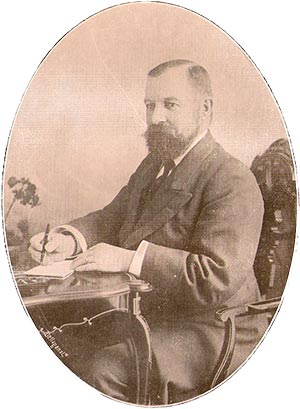
Orpington chickens had a tremendous start with three ‘super heavyweights’ in its ancestry.
The Black Orpington
Although globally popular, the original Black Orpington would soon become separated into two varieties. In the first instance, a breeder called Joseph Partington developed a much more feathery version of the Black Orpington by crossing Croad Langshans with Black Cochins (that displayed scant leg feathers). He first showed them at the London Dairy Show in the 1890s, and they were so large and feathery that the judges always awarded them first place. They likely didn’t lay as well as William Cook’s birds, but in those days, you could command up to £30 each for top exhibition stock (£3,600 today), which was far more profitable than selling eggs.
When Mr Partington passed away only a few years later, in 1901, one of his champion cocks was sold for an impressive £150 – an absolute fortune at the time (nearly £18,000 in today’s money).
From that point on, they had cast the mould for what Orpingtons should look like in terms of wow-factor size and profuse feather, hallmarks of the breed that would continue to the present day.
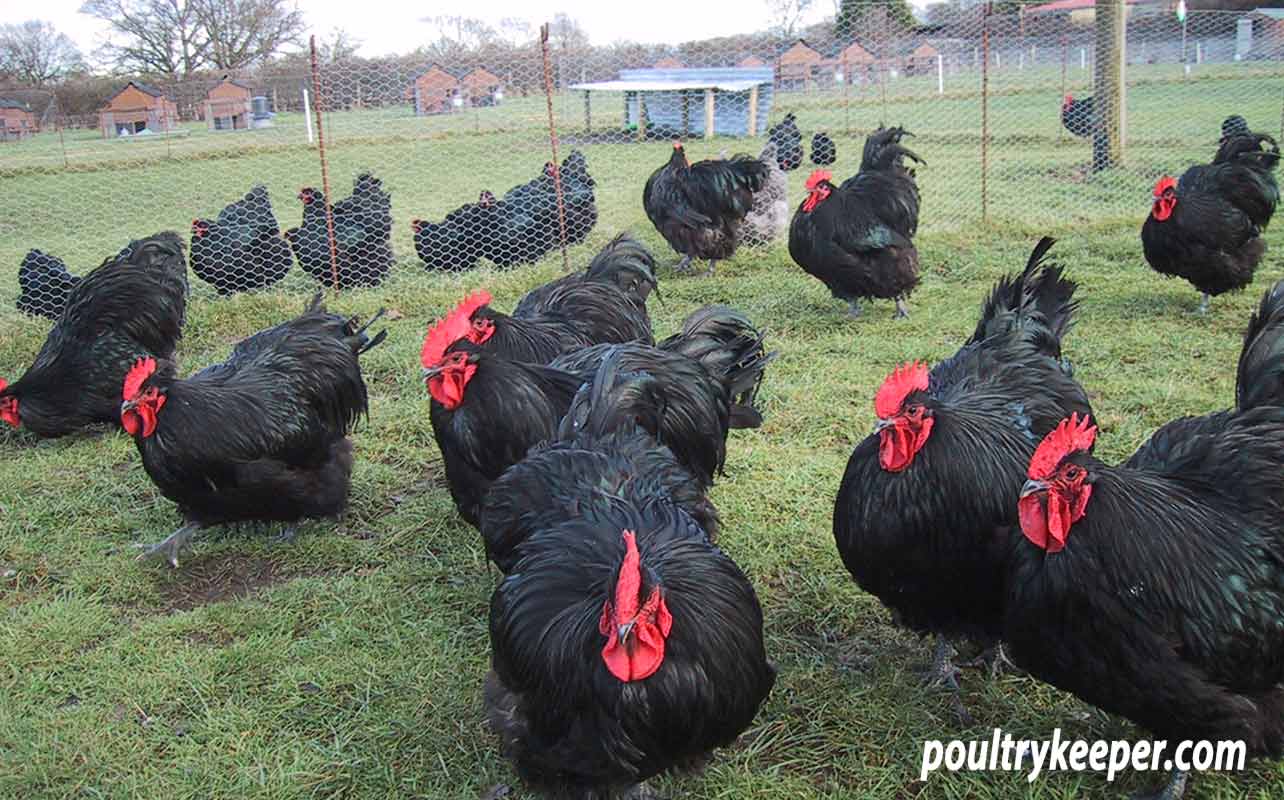
Meanwhile, in the 1920s, word had caught on about the original variety that had been exported. ‘Australian Orpingtons,’ were effectively the stock imported from British shores, bred and selected for their vast number of eggs. They were soon imported back as ‘Australian-Orpingtons’, which would be shortened to ‘Australorp’, a separate breed and many historic texts cite that this is what William Cook’s birds originally looked like.
Buff and White Orpingtons
William Cook also created the Buff and the White Orpington, with the Buff being universally popular. The soft, almost pastel, shade of Orange-Buff draws you in, and on such abundance of feathers is an aesthetic treat. Coupled with their really calm temperaments, people cannot help being captivated by the ‘Buff Orps’ that are regarded as a true British gem. As well as being phenomenal utility birds in the past, the Buff Orpington has scooped many awards in the show pen over the last few decades.
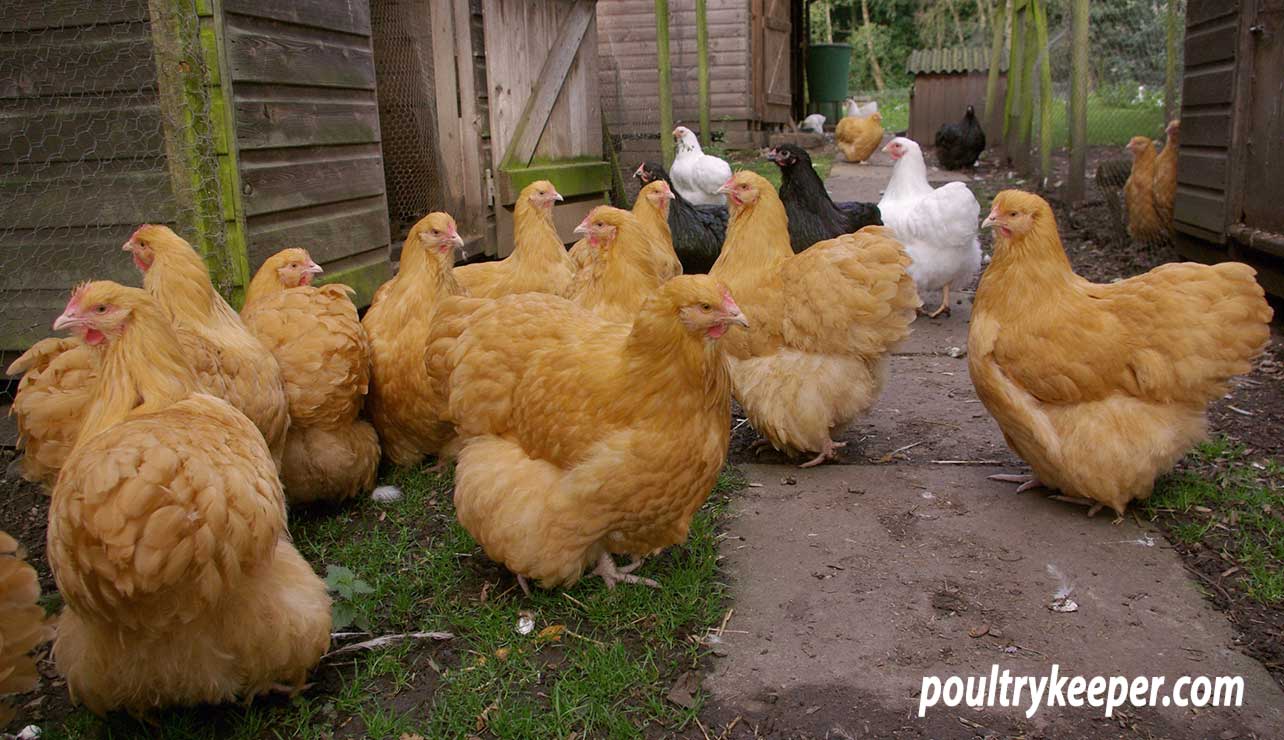
Blue Orpingtons
Blue Orpingtons were originally rejected by the Victorians, who deemed blue plumage in chickens as crossbred fowl. So their grand arrival was postponed until 1907, when they were exhibited by their creator – an Arthur C. Gilbert. It is said that Blue Orpingtons emerged from crossings of Blacks and Whites, presumably to improve the size of the Whites, so the emergence of a completely new variety was very welcome indeed.
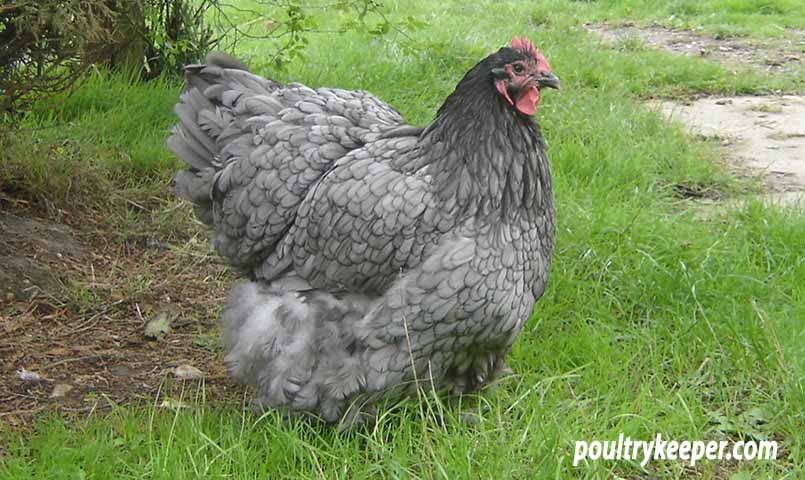
Breeding Blue Orpingtons
Sadly, like all blue varieties of chickens, Blue Orpingtons don’t breed true. So from a pen of Blues, only about half will be coloured like their parents. The remainder will be divided between Blacks and Splashes. However, the Splash males can be bred to the Black females to breed all Blues (and is a method commonly used by Orpington breeders in the UK).
Royal connections
At the Sandringham Flower show of Queen Elizabeth II’s Silver Jubilee (1977), the Queen Mother was asked to be Patron of the Poultry Club of Great Britain by Arthur Hammond Browne. She was agreeable and accepted a gift of a trio of Buff Orpingtons from the late Will Burdett MBE (who was the then President), thereon agreeing to exhibit them (her late Majesty later became Patron of the Buff Orpington Club).
The arrangement was that Arthur would retain some stock at Sandringham for the Queen Mother to see, whilst Will would carry out the main breeding of them in North Yorkshire. And many awards were won at shows throughout the country with the Queen Mother’s Buffs. They [Will and Arthur] would send the cards and rosettes to Clarence House, who would acknowledge them and return for safekeeping.
Jubilee Orpingtons
The Jubilee Orpington was made and first shown by Orpington originator William Cook in 1897. It was created to celebrate Queen Victoria’s Diamond Jubilee – hence the name, and some birds were presented to Her Royal Highness at that time. Breeds in their make-up included: Buff Orpingtons, Red Dorkings and Gold Spangled Hamburghs.
Sadly, Jubilee Orpingtons never attracted much interest, and many fanciers who had kept them by 1920 renamed them as ‘Speckled Sussex.’ On discovering that there was an original British standard for the Jubilee Orpington, keen supporters of the Jubilees, Nigel and Jane Allman (who undoubtedly took the variety forward) began campaigning for it to be reinstated at the Orpington Club’s AGMs.
After many years of lobbying and a growing support network, the Club finally accepted their proposed written standard for the large Jubilee Orpington. For it to be granted in 2012, the year of Her Majesty The Queen’s Diamond Jubilee, couldn’t have come at a better time for the variety and can only be described as ‘fitting.’
Burdett involvement
There is a saying, ‘William Cook created the Orpington, but the Burdett family kept it in the limelight!’ This is likely very true. Will Burdett MBE’s grandfather, George Burdett, first acquired some Black Orpingtons directly from William Cook, and he passed these down to Will’s father, John. Having kept them for over three decades, John Burdett created the Black Orpington bantams from crosses of Pekins and Wyandottes.
Will would later make Blue Orpington bantams with Blue Pekins bred to Black Orpington bantams and Whites by crossing in White Pekins to his Black bantams, later introducing White Sussex to improve leg colour from slate blue to white.
There was rationing even for chicken feed in the postwar years, so chicken keepers needed to get the absolute maximum out of their flock. Orpington bantams ate half as much feed as the large fowl yet laid only marginally smaller eggs. Hence the reason for bantams being created.
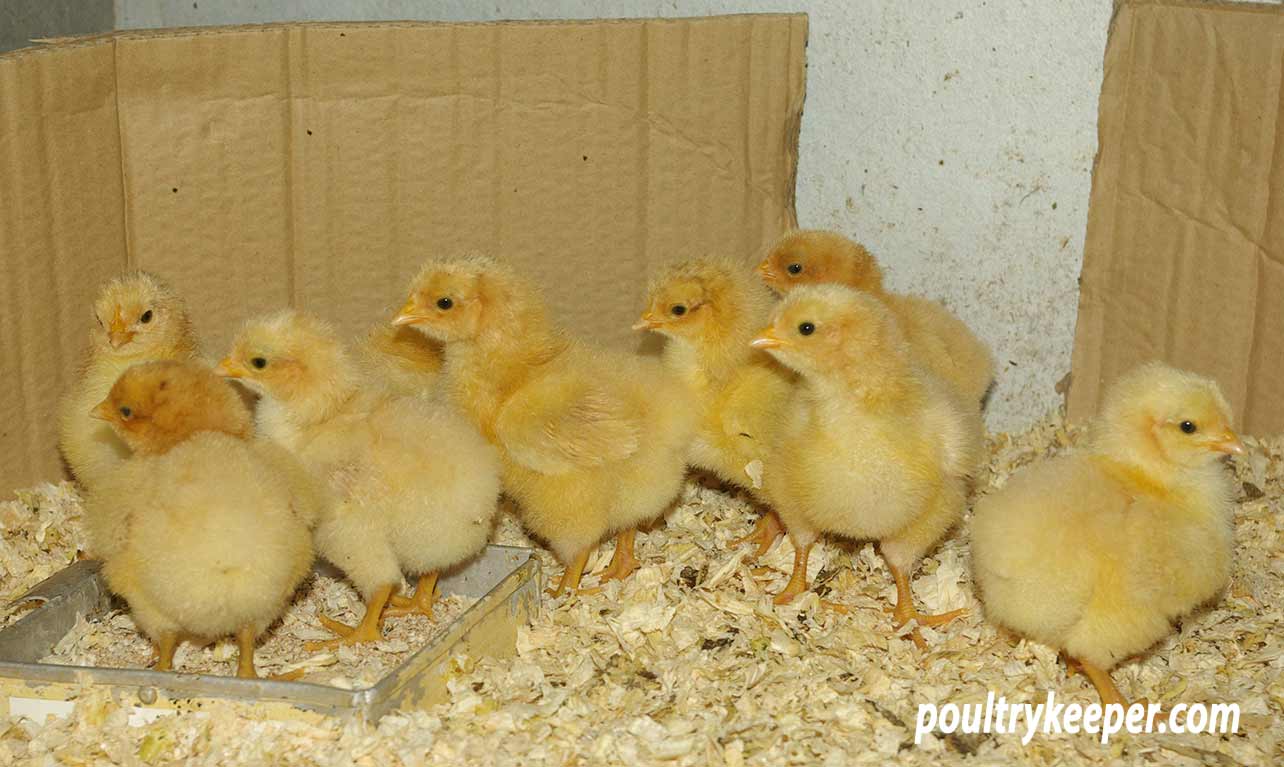
Will sadly passed away at the age of 92 but was breeding and showing his beloved ‘Orps’ right until the end. His involvement in the breed, not to mention poultry in general, is breathtaking. I had the good fortune to visit him in 2015 and see his current year crop of large Buff Orpingtons, as well as bantam Blues that he’s created some 70 years previous.
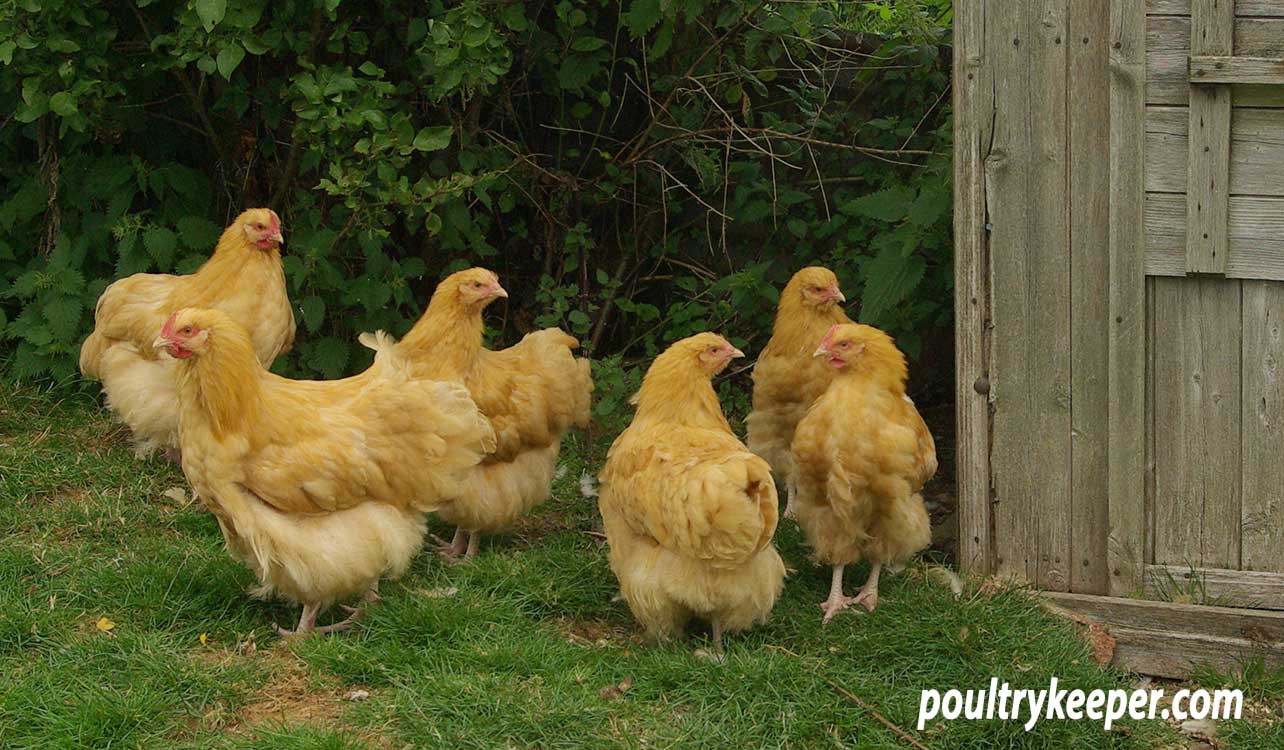
Will Burdett MBE
Poultry Icon and Legend Will Burdett MBE, was the Royal Poultry Keeper for over 25 years, helped to found the Broiler Industry in the UK (working in it for 40 years), was Poultry Club President for six years, and served on Council for over 60 years. He made several changes to better poultry breeding, including initiating the first National Poultry show and founding The Orpington Bantam Club. He has won countless awards with his stock, written "The Orpington Fowl" a popular book on Orpingtons, and was President of several breed clubs. He also created Blue Orpington and White Orpington bantams.
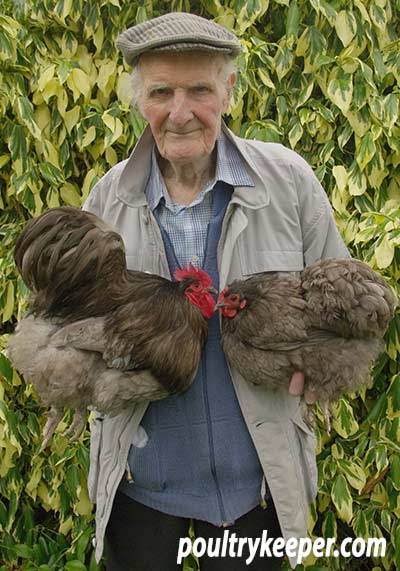
Present day
Over the past couple of decades, by far, the most popular large fowl Orpingtons were the Buffs, with the Blacks being the most popular bantams. This is because, as breeders would agree, these varieties had the best overall type – a specific back-line and under-line that sets off the breed.
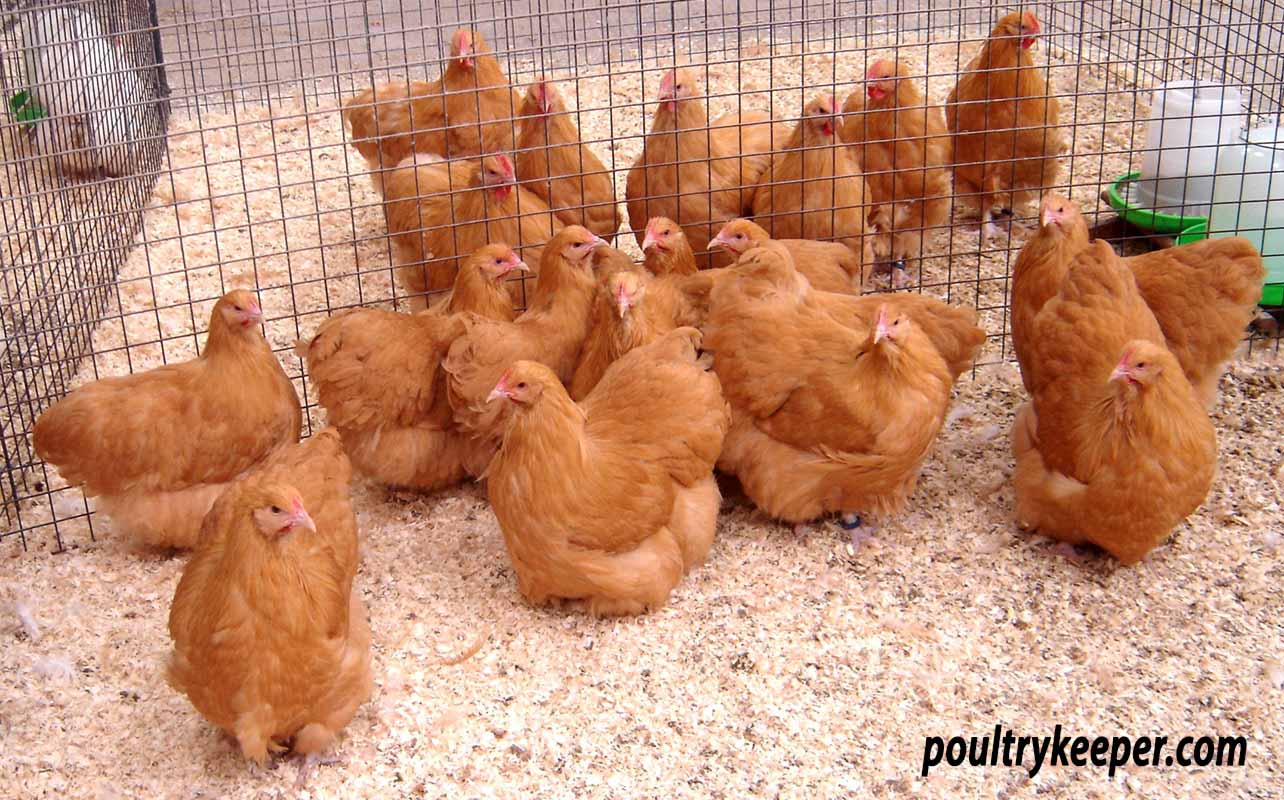
Without a doubt, the large Blacks can be over-feathered – particularly in the thigh area – even displaying raggy feathers towards the tail. In recent years the profusion of feathers in the large Buffs has made them look lower on the leg (with some likely having very short legs) – a feature brought in from Danish and Belgian breeders breeding for the extreme and to emulate the amazing feather of the Blacks. No doubt British breeders and judges soon fell in love with these new Buffs, which was certainly reflected in their awarding of top honours at shows. Although some of the old-school breeders still like to see an inch or so of the leg when an Orpington is posed for a photo, it is difficult to argue with the specimens that only have their feet showing – particularly when that under-line is correct.
The last few years have seen a decline in keepers of large Orpingtons, undoubtedly a sign of the times and spiralling feed costs. The large Buffs could now do with more support, and some specimens exhibited were suffering from a fault called ‘forward tilt’ where the head sits lower than the tail (like a Pekin). Recently, breeders such as Graham Hodge have helped revive the Buff Orpington bantam and Simon Patel (2021), unleashing his project of a revived strain of White Orpington bantams.
Chocolate Orpingtons
Chocolate Orpington bantams were created by the late Dr Clive Carefoot and revived in 2008 by Rob Boyd, Richard Davies and yours truly. You can read more about the Chocolate Orpington here.
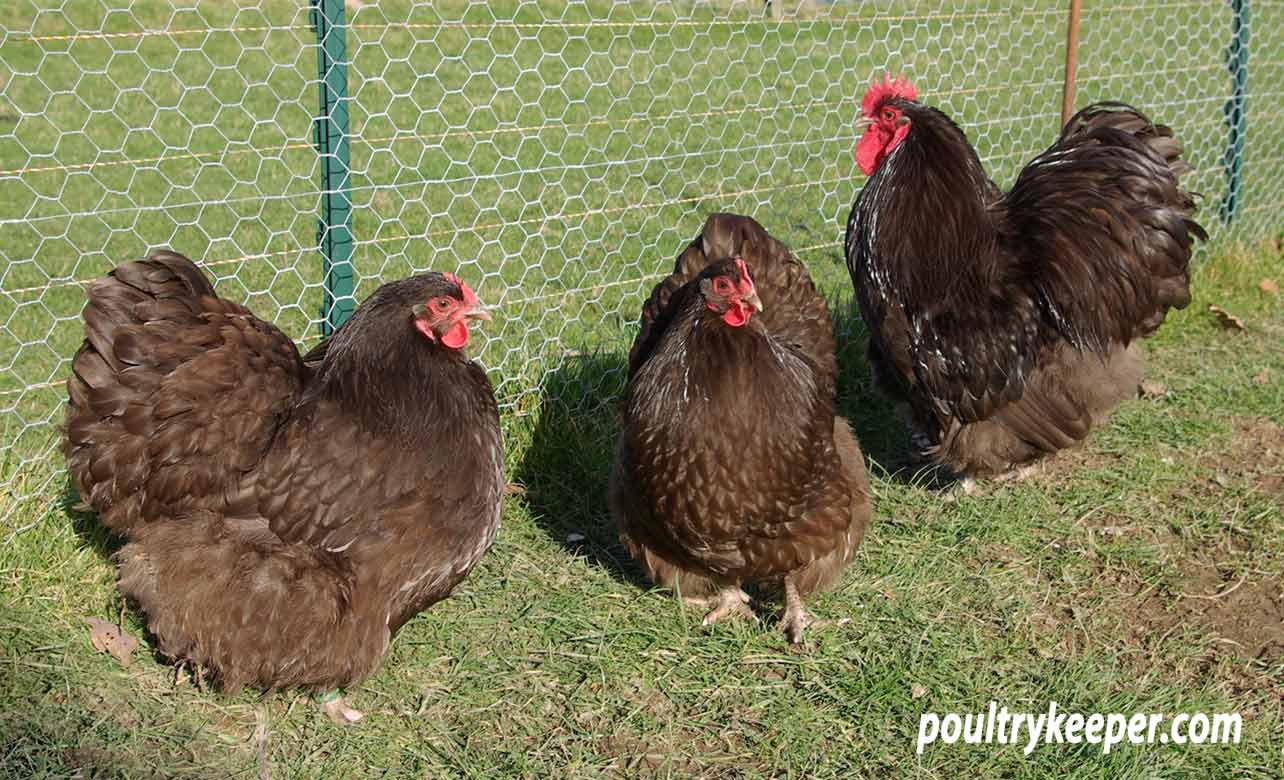
Keeping Orpingtons
Although both the large fowl and bantam Orpingtons are friendly and docile by nature, they aren’t necessarily the easiest breed for newcomers, to begin with. The reason is the abundance of feathers takes a bit of care; regular inspection for mites and lice (and matted faeces below the vent) is essential. Being big-bodied birds, they don’t like to fly much, so the provision of lower perches (or sometimes no perches) is best suited to this breed.
Providing that a good environment with minimum stress and quality feed and clean water is provided, there’s no reason why your Orpington chickens shouldn’t lay reasonably well, and most strains will go broody if eggs are allowed to build up in the nest box. They do need plenty of space, though – the late Will Burdett MBE said that the large fowl need 5-6 square feet each to roam in.
Be warned, though: Orps are very addictive and charming fowl and a significant part of British as well as poultry heritage. They are one of my Top Three Traditional British Chicken Breeds.
Orpington chicken breed profile
Uses: Exhibition / ornamental.
Origin: Orpington, Kent, G.B.
Eggs: 100 – 180 white / tinted.
Weight: Cock: 4.5 Kg min. Hen: 3.6 Kg min.
Bantam Cock: 2 Kg, Hen: 1.6 Kg.
Colours: Blue, Black, Buff, White (Standardised UK) Birchen, Chocolate, Cuckoo, Gold Laced, Jubilee, Lavender, Lemon Cuckoo, Partridge, Red, Spangled (Non Standardised).
Useful to Know: Docile, a good choice to have around with children.
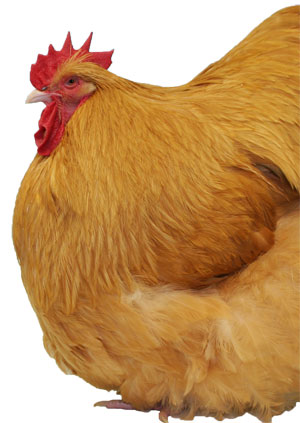
Photo gallery
If you have any interesting photos of Orpington chickens you would be willing to share, please contact me.
Books
- Popular Poultry Breeds – D. Scrivener – P.169
- Storey’s Illustrated Guide to Poultry Breeds – C. Ekarius P.98
- British Poultry Standards – P.228
- The Orpington Fowl – Will Burdett & Dr Joseph Batty
The Orpington Fowl
If you are interested in learning more about Orpingtons, then take a look at Will Burdett MBE and Joseph Batty's book The Orpington Fowl, a must-have if you are serious about keeping and breeding Orpingtons.
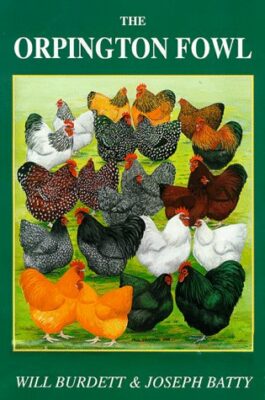
Breed Clubs
Historically there have been many different Orpington breed clubs, including the ‘Old Type Orpington Club (1928)’, and many colours had their own Club dedicated solely to them. The Orpington Bantam Club was founded in 1952 by Will Burdett MBE and catered for Blacks, Blues, Buffs and Whites. Nowadays, the only two remaining clubs that cater for both large fowl and bantams are: The Buff Orpington Club and The Orpington Club, which includes many non-standard colours.
These are the current breed clubs for Orpington chickens:
- UK: The Orpington Club The Orpington Bantam Club, The Buff Orpington Club.
- Eu: The European Orpington Club

